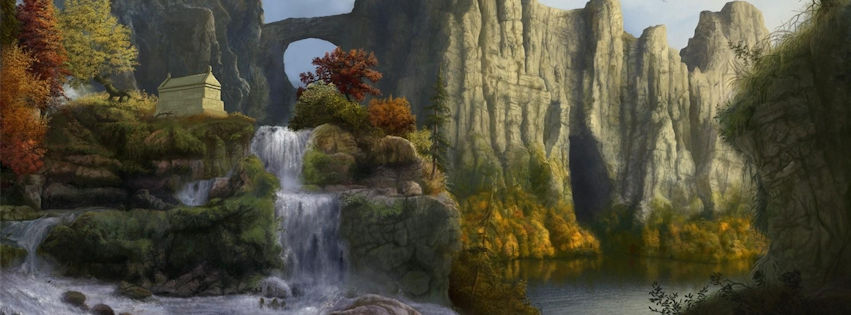Sandward Canyon
The Sandward Canyon serves as a formidable natural boundary between the Velakan Desert and the Desolate Wastes to the south. Stretching east to west, this immense chasm carves through the land like a scar, its depths lined with jagged rock formations and sheer cliffs. The canyon is a land of extremes; scorching heat from the Velakan Desert on one side bleeds into the almost otherworldly atmosphere of the Desolate Wastes, where the environment is barren, hostile, and suffused with an unsettling, unnatural energy. The canyon itself is both a geographical and psychological barrier; its massive walls seem to close in on travelers, providing little in the way of shelter from the ever-blistering sun or the unforgiving winds that sweep through the canyon’s winding pathways.
The canyon’s eastern end begins as a narrow gap, a fissure in the earth that deepens as it stretches westward, broadening into a chasm of vast proportions. Throughout the canyon, erratic rock spires rise from the depths like jagged teeth, their surfaces blackened by centuries of exposure to the harsh desert sun. The canyon floor is littered with ancient remnants: broken shards of old civilizations, weathered statues, and ruined structures hint at forgotten histories, long buried beneath the sands. The stone walls are veiled in layers of shifting sands, and it’s said that the canyon holds many hidden secrets, with only the most daring adventurers willing to traverse its dangerous depths. Sandstorms frequently sweep through the canyon, transforming the environment into a swirling mass of dust and debris, further adding to the peril of the region.
The western end of the canyon opens into the Desolate Wastes, an area known for its vast, lifeless expanses, salt flats, and toxic air. This stark transition marks the boundary between two unforgiving regions—one of arid desert, the other a warped, desolate wasteland. The Sandward Canyon is also a point of interest for the various nomadic tribes and the occasional daring merchant, as the Oasis of Serpent’s Tongue, one of the few consistent water sources in the entire region, lies near its western edge. The canyon’s role as a passageway to the Wastes is undeniable, but few make the journey, as those who enter often do not return, swallowed by the desert or the strange forces of the Wastes themselves.
The canyon’s eastern end begins as a narrow gap, a fissure in the earth that deepens as it stretches westward, broadening into a chasm of vast proportions. Throughout the canyon, erratic rock spires rise from the depths like jagged teeth, their surfaces blackened by centuries of exposure to the harsh desert sun. The canyon floor is littered with ancient remnants: broken shards of old civilizations, weathered statues, and ruined structures hint at forgotten histories, long buried beneath the sands. The stone walls are veiled in layers of shifting sands, and it’s said that the canyon holds many hidden secrets, with only the most daring adventurers willing to traverse its dangerous depths. Sandstorms frequently sweep through the canyon, transforming the environment into a swirling mass of dust and debris, further adding to the peril of the region.
The western end of the canyon opens into the Desolate Wastes, an area known for its vast, lifeless expanses, salt flats, and toxic air. This stark transition marks the boundary between two unforgiving regions—one of arid desert, the other a warped, desolate wasteland. The Sandward Canyon is also a point of interest for the various nomadic tribes and the occasional daring merchant, as the Oasis of Serpent’s Tongue, one of the few consistent water sources in the entire region, lies near its western edge. The canyon’s role as a passageway to the Wastes is undeniable, but few make the journey, as those who enter often do not return, swallowed by the desert or the strange forces of the Wastes themselves.
"Though I only scratched the surface of the Sandward Canyon, the sheer scale of it left me breathless. The towering cliffs seemed to hold secrets I wasn't yet ready to uncover—one day, I will return." - Victoria Pendrake
Type
Canyon
Location under




Comments